
Alliance, Support & Activism
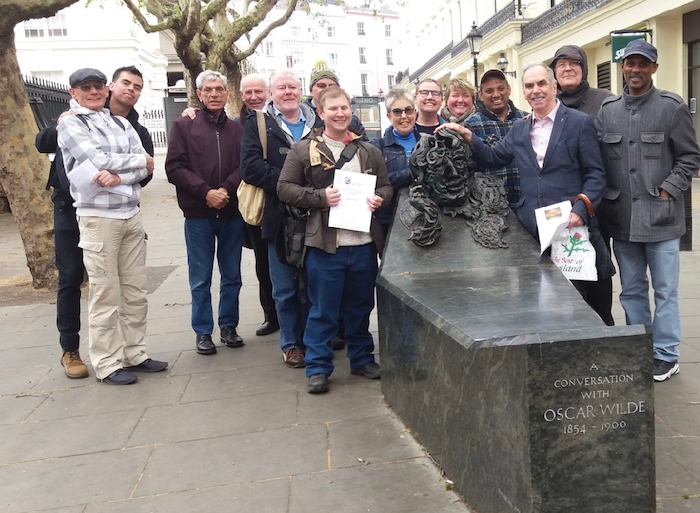
by Benjamin Smith
On 18 May 1897, the writer Oscar Wilde was released from prison after serving two years for ‘gross indecency’; imprisoned for being in a same sex relationship. One of his first acts upon gaining his freedom was to write to the Jesuits at the Church of the Immaculate Conception, Farm Street, London, asking for a six month retreat. Perhaps because they feared scandal, or because they were sceptical of his commitment, the Jesuits refused his request, instead telling him to ask again after a period of discernment. Wilde left for France shortly afterwards, and never returned to London. The story of LGBT Catholics doesn’t end there, however; London has been the scene of many more encounters between the Church and LGBT people; notably in recent times the journey of the LGBT+ Catholics Westminster (formerly Soho Masses) community.
The spring of 1999 was a time of mourning for the LGBT community; on the evening of Friday April 30th 1999, a neo-nazi had detonated a bomb in the Admiral Duncan pub in Soho, killing three people, including a pregnant woman, and injuring 79. The law which had been used to convict Oscar Wilde had been repealed in 1967, but homophobia was still common throughout society, and although the Congregation for the Doctrine of the Faith had condemned violence against “homosexual persons’ in their 1986 document “On the Pastoral Care of Homosexual Persons”, many LGBT people did not feel welcome in Catholic churches. In this atmosphere of fear and distrust, the Helpers of the Holy Souls opened the doors of their convent in Camden Town to the LGBT Catholic community, and the first Mass welcoming lesbian, gay, bisexual and transgender Catholics, their families and friends, was held there on Sunday 2nd May 1999.
Last Saturday (27th April 2019), the LGBT+ Catholics Westminster commemorated both of these anniversaries with a prayerful walk, beginning at the Oscar Wilde memorial and finishing at Farm Street church, which is now our home parish. Along the way we heard readings from scripture and from Catholic authors who had struggled with their sexuality, such as the priest Henri Nouwen and the poet Dunstan Thomas. We prayed for the victims of hate crime, the activists who have worked tirelessly for LGBT inclusion in the Church, and for the Pope and the Church as a whole. The stops on the route included the Admiral Duncan pub, the church of Notre Dame de France, where the first public conference on Catholics and Homosexuality was held in 1976, and two churches which have hosted our community over the years: St Anne’s Anglican Church, on Dean Street, and the Church of Our Lady of the Assumption and St Gregory, Warwick Street.
The Convent of the Helpers of the Holy Souls was sold in 2001, and the LGBT Catholic community moved to St Anne’s in the heart of Soho. Over time, the size of the community began to outgrow the space available, while at the same time the diocese of Westminster was looking for a way to offer outreach and support to LGBT Catholics, and in 2007 the community was invited by the diocese to attend Mass at Warwick Street twice a month. The community flourished, many members travelling long distances to attend the Masses. For many people, including myself, this was the first time we were able to openly identify ourselves as Catholic in an LGBT community that often seemed to view Catholics with suspicion, and openly identify ourselves as LGBT in a Church that often seemed to view LGBT people as a problem that needed to be solved, rather than embraced as part of God’s creation.
The news of the move to Farm Street in 2013 was met with some trepidation by the Soho Masses community: would we be accepted or shunned? Would we be swallowed up by a larger parish and lose the sense of identity and community we had worked so hard to build? However, as we discovered, both the clergy and parishioners at Farm Street take pride in the welcome they extend to all, and their response to the LGBT Catholic community was no exception. As well as worshipping together regularly as a community, LGBT+ Catholics Westminster are integrated into the life of the wider parish; serving at the Masses with music, reading and ministering, and contributing to the parish’s social and charitable activities. Our inclusion as part of the Westminster Diocese chaplaincy to LGBT people has also allowed us to start reaching out to others who may need support, with events for young people still struggling to reconcile their faith and sexual or gender identity, or for Catholic parents of LGBT people. Coming out is always challenging, and the journey of LGBT+ Catholics Westminster has been no exception, but each step we have taken has give us new opportunities to witness that LGBT people have a home in the Catholic church.
Complete Article ↪HERE↩!
A contemporary Jesus arrives as a young gay man in a modern city with “The Passion of Christ: A Gay Vision” by Douglas Blanchard. The 24 paintings present a liberating new vision of Jesus’ final days, including Palm Sunday, the Last Supper, and the arrest, trial, crucifixion and resurrection.
“Christ is one of us in my pictures,” says Blanchard. “In His sufferings, I want to show Him as someone who experiences and understands fully what it is like to be an unwelcome outsider.” Blanchard, an art professor and self-proclaimed “very agnostic believer,” used the series to grapple with his own faith struggles as a New Yorker who witnessed the 9/11 terrorist attacks.
























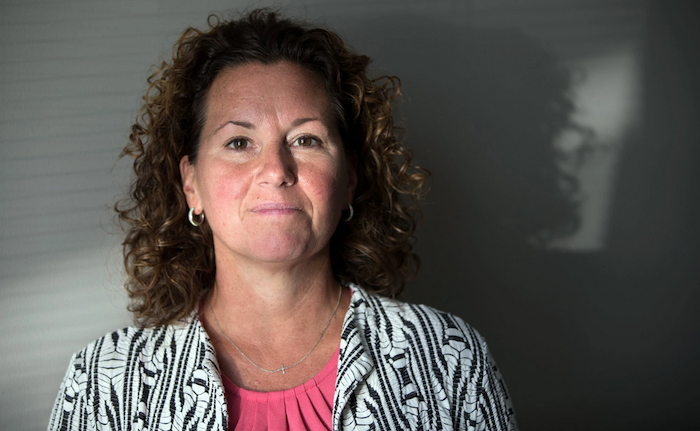
By Frank Bruni
Pat Fitzgerald, 67, has long loved being a Catholic, and the part he loved maybe most of all, for the past quarter-century, was his role as a spiritual mentor at retreats for students at a church-affiliated high school in Indianapolis, where he lives.
But he has been told that he’s not wanted anymore. His crime? He publicly supported his daughter, a guidance counselor at the school, after its administrators moved to get rid of her because she’s married to a woman.
The school’s treatment of Shelly Fitzgerald, 45, was a big local story last summer that went national; she ended up on “The Ellen DeGeneres Show” in September. It was one of many examples of Catholic institutions deciding almost whimsically to exile longtime employees — not priests or nuns but coaches, teachers, counselors — who had long been known to be gay but were suddenly regarded as liabilities.
Maybe they had quietly married their partners, formalizing those relationships and inadvertently drawing attention to themselves. Maybe some homophobic parent or congregant had belatedly learned about them and lodged a complaint. That’s what happened to Shelly Fitzgerald, and her 14 years of fine work at Roncalli High School no longer mattered. Only her 2015 marriage to her longtime partner did. She was told that she could stay on if she dissolved the union. She said no thanks and was kicked off school grounds in August.
The aftershocks still complicate the lives — and faith — of people around her: her students, their parents, her dad. On Facebook last month she posted a letter from him to the Roncalli community in which he explained that he’d just been disinvited from future retreats but thanked everyone for being such supportive friends over the years.
“Today my heart is broken,” he wrote, adding that the retreats he’d participated in — more than 40 in all — were “the most beautiful and holy settings I have ever witnessed.” He alluded only vaguely to his daughter’s case. “To people on both sides of this ongoing issue,” he wrote, “I hope you can find peace.”
But there’s no peace for the Catholic Church here. It’s too mired in its own hypocrisy. The tension between its official teaching and unofficial practice — between the ignorance of the past and the illumination of the present — grows tauter all the time.
Most Catholics support same-sex marriage, in defiance of the church’s formal position, and many parishes fully welcome L.G.B.T. people. Yet there are places, and times, when the hammer comes down.
Church leaders know full well that the priesthood would be decimated if closeted gay men were exposed and expelled. Yet the church as a matter of policy bars men with “deep-seated homosexual tendencies” and considers gay people “objectively disordered.”
Catholics are supposed to show compassion. Yet Shelly and her dad were shown anything but.
She has been on administrative leave since August, and last month her lawyer, David Page, filed a charge of discrimination against the school and the Archdiocese of Indianapolis with the federal Equal Employment Opportunity Commission. It has up to 180 days to respond.
On Tuesday morning he showed me paperwork for a second charge of discrimination that he said he would be filing imminently; it cites what happened to her father as an unlawful act of retaliation meant to dissuade Shelly from pressing her case.
Pat Fitzgerald, uncomfortable with media attention, declined to speak with me, preferring to let his daughter do the talking. “His struggle comes from caring about Roncalli and being in conflict with what they’ve done to me,” Shelly told me. In October he attended a protest against the church’s treatment of L.G.B.T. people. His sign said, “Please treat my daughter Shelly kindly.”
There is, by many accounts, profound anger and hurt at Roncalli. As it happens, Shelly was one of two directors of counseling there; the other, Lynn Starkey, 62, is in a same-sex civil union and in November filed her own charge of discrimination with the E.E.O.C., claiming a “hostile work environment” in the aftermath of Shelly’s departure. For now she remains on the job.
Many students started an L.G.B.T. advocacy group, Shelly’s Voice, that also attracted parents and other adults in the community. A related Facebook page, Time to Be a Rebel, has more than 4,500 members.
But one parent told me that students who question Shelly’s dismissal fear repercussions. “Seniors are being told that if they speak out, they take the chance of not being able to graduate,” the parent, who spoke with me on condition of anonymity, said.
Sign up for Frank Bruni’s newsletter
Get a more personal, less conventional take on political developments, newsmakers, cultural milestones and more with Frank Bruni’s exclusive commentary every week.
According to posts on the Facebook page, a small cluster of Roncalli students were invited last month to a lunch with Archbishop Charles C. Thompson of Indianapolis, only to have him stress that homosexuality is a disorder and its expression sinful. One student called it an ambush.
For comment on all of this, I contacted the Roncalli principal, who referred me to a spokesman for the archdiocese. The spokesman sent me a statement that said that Pat Fitzgerald’s exclusion from student retreats reflected the “continuing attention surrounding his daughter’s suspension” and “his own participation in public protests over Catholic Church teaching.” He was still welcome at Masses, the statement said.
In regard to Shelly’s suspension, a past statement from the archdiocese reiterated what the Catholic Church has said in similar cases: Employees of Catholic schools are expected to live in compliance with church teaching. But is that legally enforceable?
Shelly’s E.E.O.C. complaint tests where federal civil rights law covers sexual orientation, a matter on which courts in different areas of the country have disagreed. Also, the Catholic Church has attempted to claim a “ministerial exception” from nondiscrimination laws that conflict with religious tenets, but there’s continued dispute about whether this applies to workers, like Shelly, who aren’t in the clergy.
Shelly pointed out that the Catholic Church isn’t generally going after teachers who flout its rules by using birth control or divorcing or having sexual relations outside marriage. “They’re going after L.G.B.T. people,” she said. “They’re going to die on this hill.”
And they’re going to hurt people — like Shawn Aldrich, who attended Roncalli, just as his parents and his wife and her parents did. He has two children there now. What has happened to Shelly astounds him.
“She was phenomenal at her job,” Aldrich told me. “So why are we dismissing her?” He knows what church leaders say about homosexuality but noted, “It’s our church, too.” Besides, he said, “All of us are made in God’s image.”
He and his wife plan to end their family tradition. They won’t send their third child, now in seventh grade, to Roncalli. “And that breaks our hearts,” he said. “That absolutely breaks our hearts.”
Complete Article ↪HERE↩!
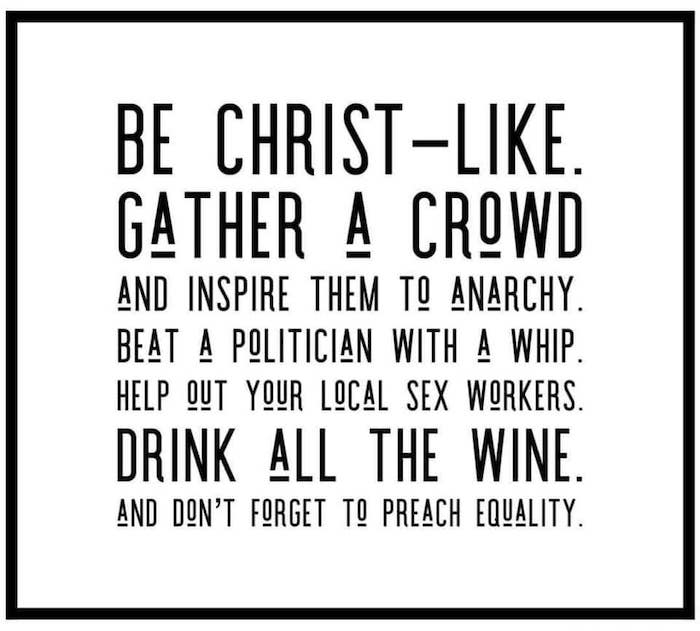

Gregory Greiten was 17 years old when the priests organized the game. It was 1982 and he was on a retreat with his classmates from St. Lawrence, a Roman Catholic seminary for teenage boys training to become priests. Leaders asked each boy to rank which he would rather be: burned over 90 percent of his body, paraplegic, or gay.
Each chose to be scorched or paralyzed. Not one uttered the word “gay.” They called the game the Game of Life.
The lesson stuck. Seven years later, he climbed up into his seminary dorm window and dangled one leg over the edge. “I really am gay,” Father Greiten, now a priest near Milwaukee, remembered telling himself for the first time. “It was like a death sentence.”
The closet of the Roman Catholic Church hinges on an impossible contradiction. For years, church leaders have driven gay congregants away in shame and insisted that “homosexual tendencies” are “disordered.” And yet, thousands of the church’s priests are gay.
The stories of gay priests are unspoken, veiled from the outside world, known only to one another, if they are known at all.
Fewer than about 10 priests in the United States have dared to come out publicly. But gay men likely make up at least 30 to 40 percent of the American Catholic clergy, according to dozens of estimates from gay priests themselves and researchers. Some priests say the number is closer to 75 percent. One priest in Wisconsin said he assumed every priest is gay unless he knows for a fact he is not. A priest in Florida put it this way: “A third are gay, a third are straight, and a third don’t know what the hell they are.”
Two dozen gay priests and seminarians from 13 states shared intimate details of their lives in the Catholic closet with The New York Times over the past two months. They were interviewed in their churches before Mass, from art museums on the weekend, in their apartments decorated with rainbow neon lights, and between classes at seminary. Some agreed to be photographed if their identities were concealed.
Almost all of them required strict confidentiality to speak without fear of retribution from their bishops or superiors. A few had been expressly forbidden to come out or even to speak about homosexuality. Most are in active ministry, and could lose more than their jobs if they are outed. The church almost always controls a priest’s housing, health insurance and retirement pension. He could lose all three if his bishop finds his sexuality disqualifying, even if he is faithful to his vows of celibacy.
The environment for gay priests has grown only more dangerous. The fall of Theodore McCarrick, the once-powerful cardinal who was defrocked last week for sexual abuse of boys and young men, has inflamed accusations that homosexuality is to blame for the church’s resurgent abuse crisis.
Studies repeatedly find there to be no connection between being gay and abusing children. And yet prominent bishops have singled out gay priests as the root of the problem, and right-wing media organizations attack what they have called the church’s “homosexual subculture,” “lavender mafia,” or “gay cabal.”
Even Pope Francis has grown more critical in recent months. He has called homosexuality “fashionable,” recommended that men with “this deep-seated tendency” not be accepted for ministry, and admonished gay priests to be “perfectly responsible, trying to never create scandal.”
This week, Pope Francis will host a much-anticipated summit on sex abuse with bishops from around the world. The debate promises to be not only about holding bishops accountable but also about homosexuality itself.
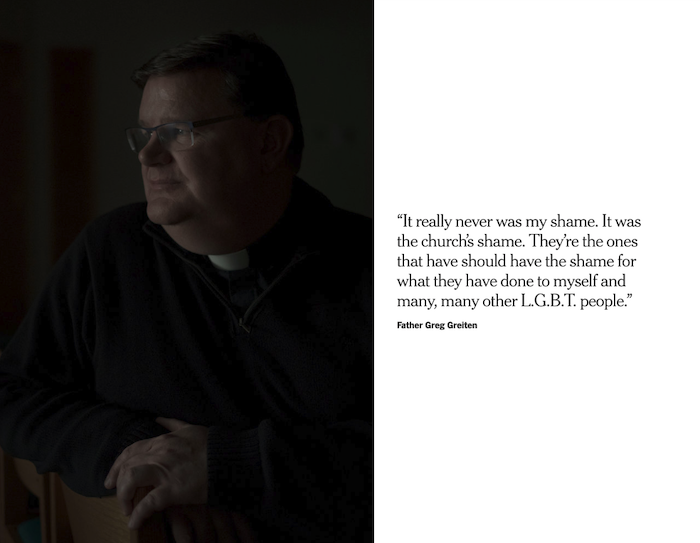
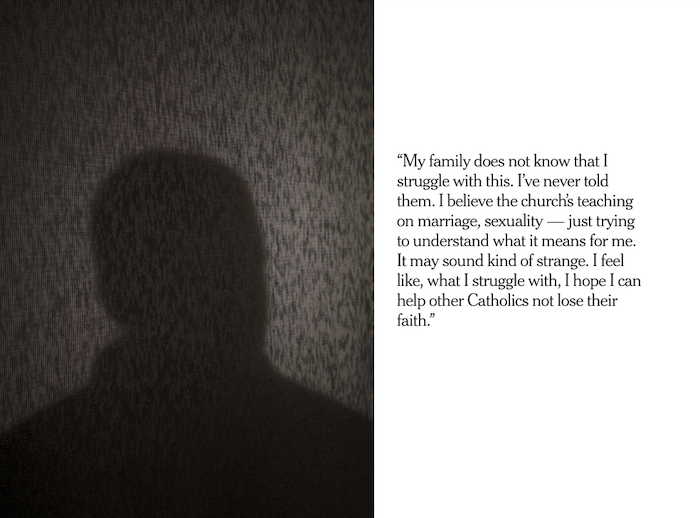
“This is my life,” a parish priest in the Northeast said. “You feel like everyone is on a witch hunt now for things you have never done.”
Just a few years ago, this shift was almost unimaginable. When Pope Francis uttered his revolutionary question, “Who am I to judge?” in 2013, he tempted the closet door to swing open. A cautious few priests stepped through.
But if the closet door cracked, the sex abuse crisis now threatens to slam it shut. Widespread scapegoating has driven many priests deeper into the closet.
“The vast majority of gay priests are not safe,” said Father Bob Bussen, a priest in Park City, Utah, who was outed about 12 years ago after he held mass for the L.G.B.T.Q. community.
“Life in the closet is worse than scapegoating,” he said. “It is not a closet. It is a cage.”
Even before a priest may know he is gay, he knows the closet. The code is taught early, often in seminary. Numquam duo, semper tres, the warning goes. Never two, always three. Move in trios, never as a couple. No going on walks alone together alone, no going to the movies in a pair. The higher-ups warned for years: Any male friendship is too dangerous, could slide into something sexual, and turn into what they called a “particular friendship.”
“You couldn’t have a particular friendship with a man, because you might end up being homosexual,” explained a priest, who once nicknamed his friends “the P.F.s.” “And you couldn’t have a friendship with a woman, because you might end up falling in love, and they were both against celibacy. With whom do you have a relationship that would be a healthy human relationship?”
Today, training for the priesthood in the United States usually starts in or after college. But until about 1980, the church often recruited boys to start in ninth grade — teenagers still in the throes of puberty. For many of today’s priests and bishops over 50, this environment limited healthy sexual development. Priests cannot marry, so sexuality from the start was about abstinence, and obedience.


The sexual revolution happening outside seminary walls might as well have happened on the moon, and national milestones in the fight for gay rights like the Stonewall riots, on Mars.
One priest in a rural diocese said the rules reminded him of how his elementary school forced left-handed students to write with their right hand. “You can be taught to act straight in order to survive,” he said.
“I can still remember seeing a seminarian come out of another’s room at 5 a.m. and thinking, isn’t it nice, they talked all night,” the same priest said. “I was so naïve.”
Priests in America tend to come out to themselves at a much later age than the national average for gay men, 15. Many gay priests spoke of being pulled between denial and confusion, finally coming out to themselves in their 30s or 40s.
Father Greiten was 24 when he realized he was gay and considered jumping from his dorm window. He did not jump, but confided his despair in a classmate. His friend came out himself. It was a revelation: There were other people studying to be priests who were gay. It was just that no one talked about it.
He reached out to a former seminary professor who he thought might also be a gay man.
“There will be a time in your life when you will look back on this and you’re going to just love yourself for being gay,” Father Greiten remembered this man telling him. “I thought, ‘This man must be totally insane.’”
But he had discovered the strange irony of the Catholic closet — it isn’t secret at all.
“It’s kind of like an open closet,” Father Greiten said. “It’s the making of it public, and speaking about it, where it becomes an issue.”
One priest, whose parish has no idea he is gay, remembered a backyard cocktail party a few years ago where fellow priests were saying “vile” things about a gay bishop. He intervened, and came out to them. He lost three friends that night. “I broke the code by announcing to them that I was gay,” he said. “It was a conspiracy of silence.”
That is a reason many of the men are out to only a few close friends. The grapevine has taught them which priests in their diocese are gay, whom to trust, and whom to fear.
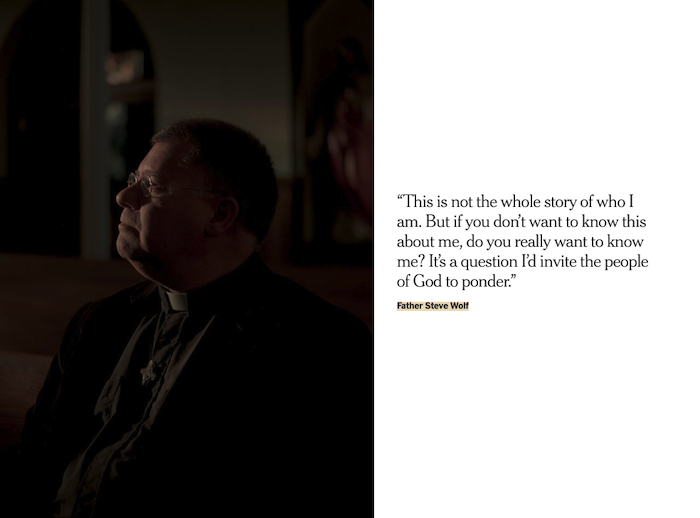
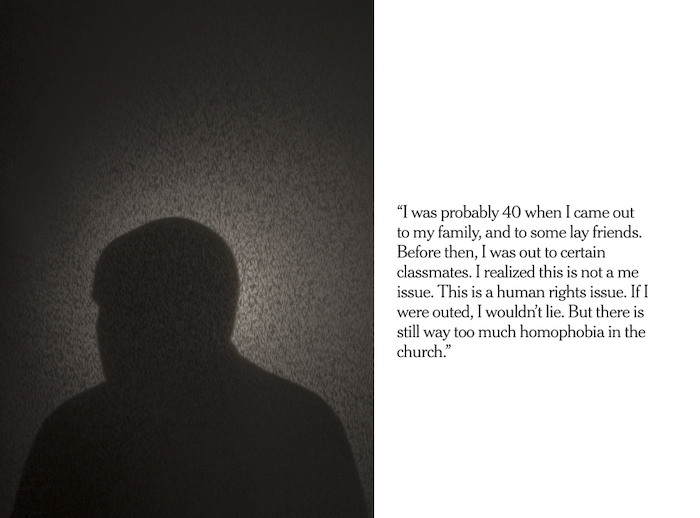
All priests must wrestle with their vows of celibacy, and the few priests who are publicly out make clear they are chaste.
Still, many priests said they have had sex with other men to explore their sexual identity. Some have watched pornography to see what it was like for two men to have sex. They ultimately found more anguish than pleasure.
One priest had sex for the first time at 62, no strings attached, with a man he met online. The relationship was discovered and reported to his bishop, and he has not had sex since. Another priest, when asked if he had ever considered himself as having a partner, wondered what that even meant. He paused, before mentioning one very special friend. “I fell in love several times with men,” he said. “I knew from the beginning it wasn’t going to last.”
Though open, the closet means that many priests have held the most painful stories among themselves for decades: The seminarian who died by suicide, and the matches from a gay bar found afterward in his room. The priest friends who died of AIDS. The feeling of coming home to an empty rectory every night.
So they find ways to encourage one other. They share books like Father James Martin’s groundbreaking “Building a Bridge,” on the relationship between the Catholic and L.G.B.T. communities. Some have signed petitions against church-sponsored conversion therapy programs, or have met on private retreats, after figuring out how to conceal them on their church calendars. Occasionally, a priest may even take off his collar and offer to unofficially bless a gay couple’s marriage.
Some may call this rebellion. But “it is not a cabal,” one priest said. “It is a support group.”
Just over a year ago, after meeting with a group of gay priests, Father Greiten decided it was time to end his silence. At Sunday Mass, during Advent, he told his suburban parish he was gay, and celibate. They leapt to their feet in applause.
His story went viral. A 90-year-old priest called him to say he had lived his entire life in the closet and longed for the future to be different. A woman wrote from Mississippi, asking him to move south to be her priest.
To some church leaders, that outpouring of support may have been even more threatening than his sexuality. Father Greiten had committed the cardinal sin: He opened the door to debate. His archbishop, Jerome E. Listecki of Milwaukee, issued a statement saying that he wished Father Greiten had not gone public. Letters poured in calling him “satanic,” “gay filth,” and a “monster” who sodomized children.
The idea that gay priests are responsible for child sexual abuse remains a persistent belief, especially in many conservative Catholic circles. For years, church leaders have been deeply confused about the relationship between gay men and sexual abuse. With every new abuse revelation, the tangled threads of the church’s sexual culture become even more impossible to sort out.
Study after study shows that homosexuality is not a predictor of child molestation. This is also true for priests, according to a famous studyby John Jay College of Criminal Justice in the wake of revelations in 2002 about child sex abuse in the church. The John Jay research, which church leaders commissioned, found that same-sex experience did not make priests more likely to abuse minors, and that four out of five people who said they were victims were male. Researchers found no single cause for this abuse, but identified that abusive priests’ extensive access to boys had been critical to their choice of victims.
The notion that a certain sexual identity leads to abusive behavior has demoralized gay priests for decades. Days after one man retired, he still could not shake what his archbishop in the 1970s told all the new priests headed to their first parish assignments. “He said, ‘I don’t ever want you to call me to report about your pastor, unless he is a homo or an alchie,’” he said, referring to an alcoholic. “He didn’t even know what he meant when he said homo, because we were all homos. He meant a predator, like serial predator.”
This perception persists today at prominent Catholic seminaries. At the largest in the United States, Mundelein Seminary in Illinois, few ever talk about sexual identity, said one gay student, who is afraid to ever come out. Since last summer, when Mr. McCarrick was exposed for abusing young men, students have been drilled in rules about celibacy and the evils of masturbation and pornography.
“Classmates will say, ‘Don’t admit gays,’” said the student. “Their attitude is that it is gay priests who inflict abuse on younger guys.”
Priests across the country are wondering if their sacrifice is worth the personal cost. “Am I going to leave the priesthood because I’m sick of that accusation?” asked Father Michael Shanahan, a Chicago priest who came out publicly three years ago. “Become more distant from parishioners? Am I going to hide? Become hardened, and old?”
Blaming sexual abuse on gay men is almost sure to be a major topic this week at the Vatican, at a much-anticipated four-day summit on sexual abuse. Pope Francis has called the world’s most powerful bishops to Rome to educate them on the problems of abuse, after high-profile abuses cases in the United States, Australia, Chile and elsewhere.
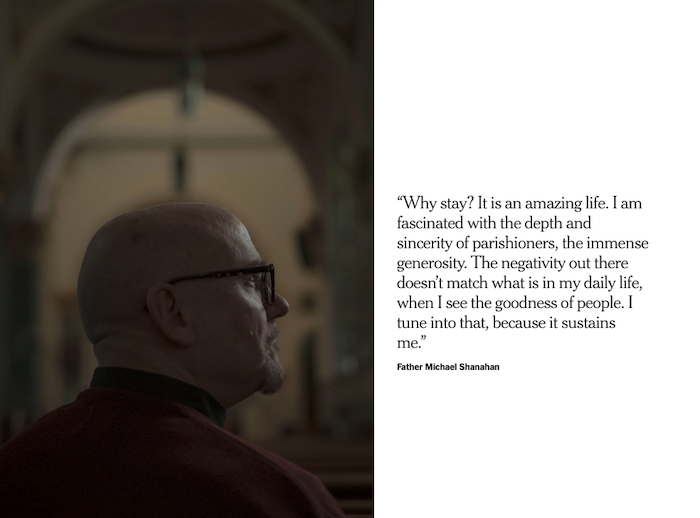
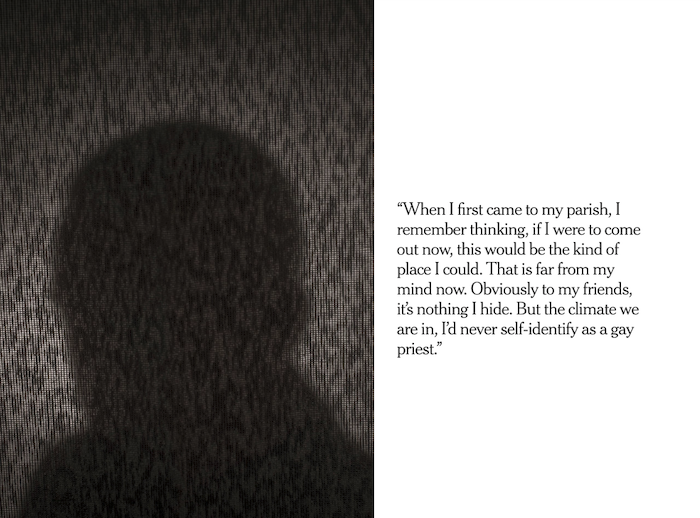
The event has worried gay priests. A few years after the 2002 scandal, the Vatican banned gay men from seminaries and ordination. When the abuse crisis broke out again last summer, the former Vatican ambassador to the United States, Archbishop Carlo Maria Viganò, accused “homosexual networks” of American cardinals of secretly working to protect abusers. And this week, a sensational book titled “Sodoma” in Europe (“In the Closet of the Vatican” in the United States) is being released that claims to expose a vast gay subculture at the Vatican.
A group of gay priests in the Netherlands recently took the unusually bold step of writing to Pope Francis, urging him to allow gay, celibate men to be ordained.
“Instead of seeing increased accountability on the parts of the bishops, it could become once again a condemnation of lesbian, gay, transsexual people within the church,” said John Coe, 63, a permanent deacon in Kentucky, who came out last year.
Sitting in his parish’s small counseling room, Father Greiten reflected on it all. He wished he could talk to Pope Francis himself. “Listen to my story of how the church traumatized me for being a gay man,” he asked, into the air.
“It’s not just about the sexual abuse crisis,” he said, his voice growing urgent. “They are sexually traumatizing and wounding yet another generation. We have to stand up and say no more sexual abuse, no more sexual traumatizing, no more sexual wounding. We have to get it right when it comes to sexuality.”
For now, Father Greiten was getting ready for his 15th trip to Honduras with doctors and medical supplies. A shadow box hung on the wall behind him. It displayed a scrap of purple knitting, needle still stuck in the top. He calls it “The Unfinished Gift.”
“What if every priest was truly allowed to live their life freely, openly, honestly?” he asked. “That’s my dream.”
Complete Article ↪HERE↩!

Recently, a Calgary woman filed two human rights complaints with the Alberta Human Rights Commission. The employee, Barb Hamilton, says she was pushed out the Calgary Catholic School District (CCSD) because of her sexuality and was refused employment on the grounds of marital status, religious belief and sexual orientation.
Hamilton says she knew of 10 LGBTQ students in the school where she was principal who had hurt themselves, including by cutting themselves or attempting suicide because of homophobia at home or school. She says she went to the district for help but nothing changed.
Many Canadians may believe that LGBTQ people are protected from discrimination. But my research into religiously inspired homophobia and transphobia in Canadian Catholic schools since 2004 shows there are other LGBTQ-identified teachers who suffer similar fates.
I personally experienced this risk when I taught high school English for CCSD.
It might seem strange that someone like me, a publicly “out” lesbian, sought employment with a Catholic school. But I was raised in a Catholic family that counts clergy among its members and I regarded myself as culturally Catholic. Having a Catholic background also made it easier for me to find a teaching position at a time when they were hard to get.
In the years that I taught for CCSD, I experienced homophobia daily. I knew I could no longer work for CCSD when a student where I was teaching died by suicide after suffering months of homophobic bullying because he was gay.
I left teaching to research homophobia and transphobia in Canadian Catholic schools and also to begin to question and understand how these phobias are institutionalized. In other words, who or what systems are responsible for creating and implementing homophobic and transphobic religious curriculum and administrative policies?
Using Catholic doctrine to fire LGBTQ teachers and to discriminate against queer students in Catholic schools violates Section 15 of the Canadian Charter of Rights and Freedoms, the equality rights provision. Shouldn’t publicly funded Catholic schools respect the law?
Publicly funded Catholic schools currently have constitutional status in the provinces of Alberta, Saskatchewan and Ontario. These separate schools are operated by civil authorities and are accountable to provincial governments. Religious bodies do not have a legal interest in them, and as such, Canadian Catholic separate schools are not private or parochial schools as is common in other countries.

Of course, the Charter also ensures freedom of conscience and religion. However, when the expression of particular religious beliefs calls for the suppression of another’s equality rights, freedoms are curtailed rather than safeguarded.
This recurring discrimination against sexual and gender minority groups could be due to the central contradiction within Catholic doctrine itself: the church’s teaching best summarized as “It’s OK to be gay, just don’t act on it,” — a position some Catholics reject.
An influential 2004 Ontario curricular and policy document, “Pastoral Guidelines to Assist Students of Same-Sex Orientation”, presents a variety of guidelines, personal stories and sections of the Catechism of the Catholic Church pertaining to homosexual attraction to convey a contradictory position. While homosexual acts are “intrinsically disordered,” people experiencing homosexual attraction are called to chastity and “must be accepted with respect, compassion, and sensitivity” and therefore are in need of “pastoral care.”
The pastoral guidelines document includes a statement on building safe communities and a 1986 letter to Canadian Bishops from the Congregation for the Doctrine of the Faith (a Vatican office). The letter elaborates on the official Church teachings, stating the “inclination of the homosexual person” is a “strong tendency ordered toward an intrinsic moral evil.” Many LGBTQ people refer to this document as the “Halloween Letter” because it is so scary and was issued October 1 (1986). The Assembly of Catholic Bishops of Ontario shares the resource, with this letter, on its website.
Where schools promote such contradictory messages associating respect and depravity with LGBTQ people, they have made Alberta and Ontario Catholic schools potential hotbeds for homophobia — places where dedicated teachers fear for their jobs, and where LGBTQ youth are denied true acceptance and as a consequence are at risk of bullying and depression among other things.
My recent book Homophobia in the Hallways: Heterosexism and Transphobia in Catholic Schools explores causes and effects of the long-standing disconnect between Canadian Catholic schools and the Canadian Charter of Human Rights vis-à-vis sexual and gender minority groups.
Charter rights regularly clash with Catholic doctrine about sexuality in schools as this doctrine is selectively interpreted and applied regarding how employees embody a “Catholic lifestyle,” as suggested in Catholic lifestyle teacher contracts.
I sought to document how such homophobic policies and views are impacting teachers and students and and to uncover what is actually happening.
Through interviews with 20 LGBTQ students and teachers in some Alberta and Ontario Catholic schools, and through media accounts, I found that publicly funded Catholic schools in Canada respond to non-heterosexual and non-binary gender students and teachers and in contradictory and inconsistent ways.
All of the research participants experienced some form of homophobia or transphobia in their Catholic schools. None described a Catholic school environment that accepted and welcomed sexual and gender diversity.
I documented the firing of lesbian and gay teachers because they married their same-sex partners; the firing of lesbian and gay teachers because they wanted to have children with their same-sex partners; the firing of transgender teachers for transitioning from one gender to another.
Something as simple as discussing holiday plans can reveal that a teacher who is a lesbian has a same-sex partner. If this detail is revealed to leaders, this teacher can be at risk of being deemed to be living contrary to Catholic teaching and therefore subject to punitive action.
The teachers are given very little, if any, warning and find themselves in meetings without the support of a union representative or lawyer.
I also documented how schools seek to prohibit students from attending their high school proms with their same-sex dates, bar students from appearing in gender-variant clothing for official school photographs or functions like the prom; and deny students the right to establish Gay–Straight Alliances.
I noted a similarity of experiences among research participants in the distant provinces of Alberta and Ontario, in terms of how they were subject to heteronormative repression where schools are legally accountable to provinces but look to Bishops for pastoral leadership.
Oppression is a problem not only for LGBTQ people and our allies, but for all of us concerned about human dignity, human rights, love for our neighbours and social justice.
Complete Article ↪HERE↩!
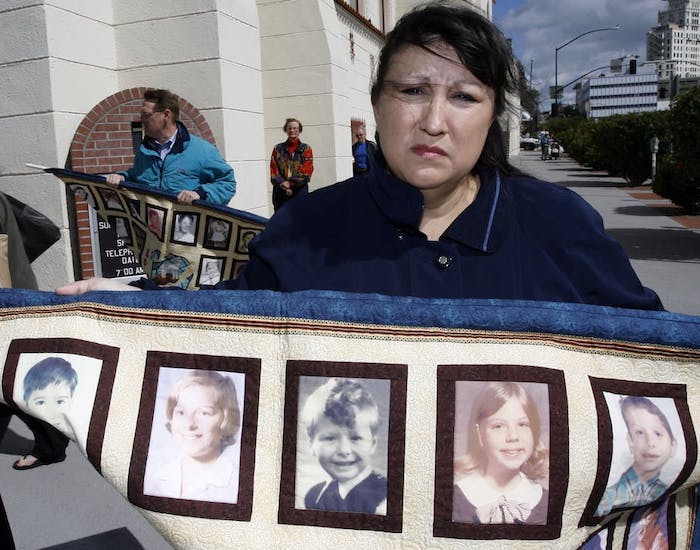
Pope Francis started the new year criticizing some Catholic bishops for their role in the church’s sexual abuse crisis. In a letter to bishops gathered at Mundelein Seminary in Illinois for a spiritual retreat, the pope said that the “disparaging, discrediting, playing the victim” had greatly undermined the Catholic Church. This followed the pope’s earlier remarks asking clergy guilty of sexual assault to turn themselves over to law enforcement.
Stories of clergy sex abuse have continued to increase. Among the more recent revelations, a Catholic diocese recently released the names of Jesuit priests who face “credible or established” accusations of abuse of minors. Church members learned that many priests accused of sexual abuse on Indian reservations were retired on the Gonzaga University campus in Spokane. And another external investigation has revealed that the Catholic Church failed to disclose abuse accusations against 500 priests and clergy.
Church attendance has been on the decline for some time, with the steepest fall of an average 45 percent, between 2005 to 2008. And with these latest scandals, as a theologian recently wrote, the Catholic Church is in the midst of its “biggest crisis since the Reformation.”
But what many do not realize is that staying in the church does not mean agreeing with its policies. In the past, Catholics have challenged the church through multiple forms of resistance – at times discreet and at other times quite dramatic.
I had already begun my training as a scholar of religion and society when I learned that the priest from whom I took my first communion was a known predator in the Boston Archdiocese. I have since then researched and written about the Catholic clergy abuse cover-up.
Back in the 1960s, some radical American Catholics were at the forefront of challenging U.S. involvement in the war in Vietnam. Perhaps the most famous among them were the Berrigan brothers. Rev. Daniel Berrigan, the older brother, was an American Jesuit priest, who, along with with other religious leaders, expressed public concern over the war.
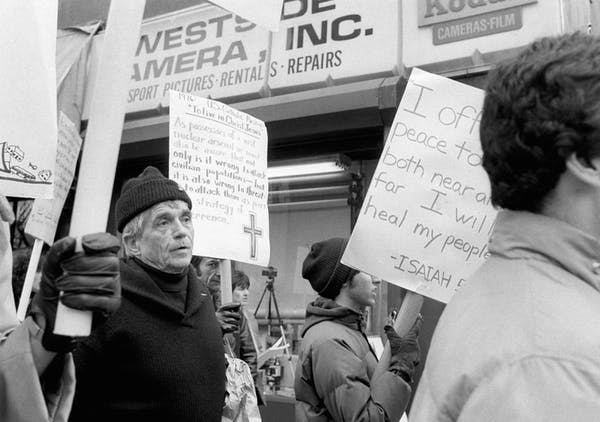
In New York, Daniel Berrigan joined hands with a group called the Catholic Workers, in order to build a “decent non-violent society” – what they called “a society of conscience.” Among their protests was a public burning of draft cards in Union Square in 1965.
Months earlier, the U.S. Congress had passed legislation that made mutilation of draft registration a felony. A powerful commentary by the editors of the Catholic “Commonweal” magazine described the event as a “liturgical ceremony” backed by a willingness to risk five years of freedom.
But some in the Catholic leadership were concerned that Daniel Berrigan’s peace activism was going too far. Soon after another Catholic protester set himself on fire in front of the United Nations in an act of protest, Berrigan disappeared from New York. He’d been sent to Latin America on an “assignment” by his superiors.
The word among Catholics was that Cardinal Francis Spellman had Berrigan expelled from the U.S. The accuracy of the decision is selectively disputed. However, the narrative had great power. The public outcry among Catholics was immense. University students took to the streets.
The New York Times carried a vehement objection that was signed by more than a thousand Catholic practitioners and theological leaders. The repression of free speech, they said, was “intolerable in the Roman Catholic Church.”
In May 1967, Berrigan returned to the United States, only to renew his protest against the draft. Joined by his brother Philip, they broke into a draft board office in Baltimore and poured vials of their own blood on paper records.
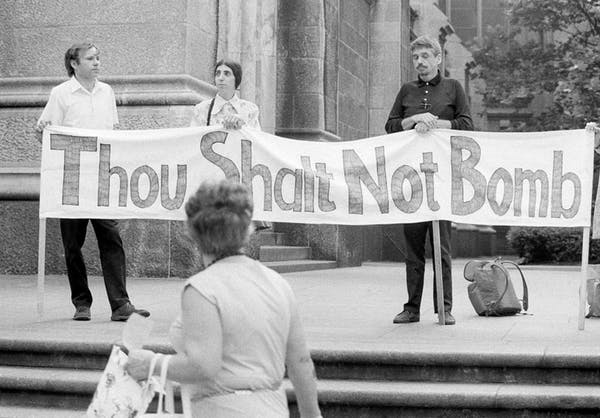
In pouring vials of their own blood on draft records, they were extending the use of Christ’s blood of sacrifice, to promote peace, as part of Catholic teachings.
The next year they joined by seven other Catholic protesters in a protest action in Catonsville, Maryland. The group used homemade napalm to destroy 378 draft files in the parking lot of a draft board. Daniel Berrigan was put on the FBI’s most wanted list. Both brothers later served time in federal prisons.
After the Vietnam war, their protests continued under a group called Plowshares. The name came from the commandment in the book of Isaiah to “beat swords into plowshares.” The Berrigan brothers put their energy into anti-nuclear protests around the country. At a nuclear missile facility in King of Prussia, Pennsylvania, they hammered on nuclear warheads and once again poured their own blood upon them, bridging Catholic symbols with religious protest.
Church leadership, they said, was too cozy with a heavily militarized America.
Around the same time, another group of Roman Catholics was challenging the leadership of the church using different tactics. In 1969, a group of Chicano Catholic student activists that called itself Católicos Por La Raza, objected to the money that the Archdiocese of Los Angeles was spending on building a new cathedral called St. Basil’s. They believed that money could be better spent on improving the social and economic conditions of Catholic Mexican-Americans.
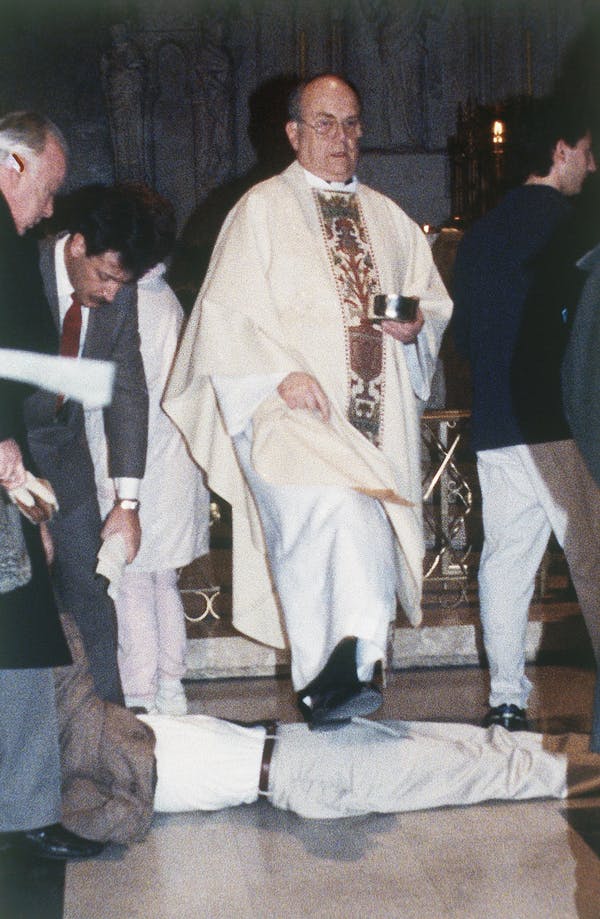
Católicos Por La Raza posed a list of demands for the Catholic Church that included the use of church facilities for community work, providing housing and educational assistance, and developing health care programs.
On Christmas Eve, 300 people marched to protest at St. Basil’s. Outside, they chanted “Que viva la raza” and “Catholics for the people.” Some members also planned to bring the protest across the threshold of the cathedral and into the Christmas Eve Mass.
The church locked its front doors. The marchers were met at side doors by undercover county sheriffs.
Later, the protesters publicly burned their baptismal certificates. Catholic teaching maintains that, once baptized, Catholic identity cannot be divested. By burning these symbols of Roman Catholic belonging, members of Católicos Por La Raza were making a powerful statement of their renunciation of the religion that they perceived could not be reformed.
Back in New York, a generation later, Catholics also organized confrontations with Church leadership. At the height of the AIDS crisis, in 1989, the American Catholic Bishops drafted an explicit condemnation of the use of condoms to stop the spread of the AIDS virus. “The truth is not in condoms or clean needles,” said Cardinal John O’Connor. “These are lies … good morality is good medicine.”
In response, AIDS activists organized an action called “Stop the Church” to protest against the “murderous AIDS policy” at St. Patrick’s Cathedral in Manhattan. Thousands of people gathered to protest. Outside, activists distributed condoms and safer-sex information to passers-by. Inside, some protesters staged a die-in.
And this does not even get into waves of protests over women’s ordination since 1976.
In all these protests, Roman Catholics were demanding that powerful members of the hierarchy acknowledge their demands for the ethics of the church.
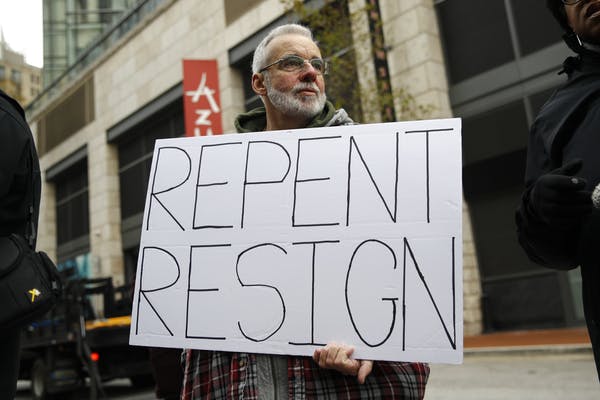
Similar resistance continued in 2002, when the Boston Globe Spotlight investigation team exposed the systematic cover-up of child sexual abuse in the Boston Archdiocese, under Cardinal Bernard Law.
On Sundays Catholics came out to protest in front of the Cathedral of the Holy Cross in Boston, where the cardinal said Mass. They shouted and held up signs calling for his resignation. Other Catholics were creating pressure to have the cardinal removed by cutting off lay financial support for the Archdiocese.
They encouraged continuing giving to the poor or to the local parish. But until the cardinal was held accountable, those in the pews were encouraged to abstain from institutional giving. Before the next New Year, enough financial and legal pressure forced Cardinal Law to be removed from the Archdiocese.
February 2019 will bring a crucial meeting between the pope and the cardinals. Catholics today could well ask what is their way of showing resistance. After all, there is a rich Catholic heritage that shows that members of the church who put their bodies on the line can make a difference.
Complete Article ↪HERE↩!

This past summer’s credible allegations against former Cardinal Theodore McCarrick have fundamentally altered the way Catholics are talking about the abuse crisis. In the wake of the Boston Globe’s 2002 exposé (memorialized in the important and painful film, Spotlight), the conversation revolved around the most shocking tales of abuse – namely, of priests sexually molesting children. And indeed, it’s the allegation that “Uncle Ted” sexually assaulted a minor that finally brought his story into its own recent spotlight.
However, the allegations against McCarrick also include repeated sexual transgressions with adult seminarians. While lacking the initial shock-value of child-molestation, this pattern of behavior has become a new focal point in conversations about the crisis. Part of this shift can be attributed to a religious extension of #MeToo, sometimes called #ChurchToo.
The #MeToo movement has drawn attention to the way that power dynamics contribute to sexual predation. Harvey Weinstein is perhaps the most famous case but, again and again, powerful figures in the workplace have used their influence to sexually prey upon their subordinates. A similar power dynamic can be seen in the seminary. In this setting, where vows of celibacy and chastity are ostensibly operative, powerful figures such as McCarrick have groomed future priests by offering enticing political-ecclesiastical connections – and have manipulated those offers to satisfy their own sexual appetites.
McCarrick is not a one-off case. The associate pastor of my childhood parish in Iowa (and now a former priest) has written about being sexually assaulted during his own journey to the priesthood and the culture of drinking, sex, lies and secrecy during his days as a seminarian. This phenomenon is wide-ranging enough to include supposed “progressives” like McCarrick as well as supposedly “conservative” dioceses like Lincoln, Nebraska.
And so in recent months it has become commonplace to hear Catholics insist that the abuse crisis is not just about children, but about young adults, too – especially seminarians. It’s a refrain echoed on Catholic news and websites, on social media and at a recent panel discussion which I attended at a local parish in Salt Lake City. Attention to this pervasive and long-overlooked problem is a good thing in itself.
At the same time, it is frequently paired with a disturbing follow-up, namely, the suggestion that blame for this pattern of behavior falls squarely at the feet of “homosexuality.” According to this rationale, because the preponderance of abuse cases in the church involve male priests and adolescent or young adult men, the problem must be the disproportionate number of gay men in the priesthood. And so to stop the exploitation of seminarians and other young men, the proposed solution is to purge the priesthood’s ranks of its gay clerics. This diagnosis is not new, but especially since it was advanced in Abp. Viganò’s explosive August letter, it has risen to a new level in the popular imagination of many U.S. Catholics. Its spread has been facilitated by traditionalist leaders in the Catholic hierarchy as well.
However, the cause of the #ChurchToo phenomenon can in no fair way be traced to the orientation of gay clerics. Perhaps the easiest way to call this connection into question is to compare it with the wider #MeToo movement. In the case of Weinstein, nobody judged his pattern of preying upon women to stand as an indictment of heterosexuality. (Nor was such a judgment made after similar allegations surfaced against other public figures like Charlie Rose, Bill O’Reilly, Roger Ailes, or Matt Lauer.) Likewise, calls to ban gay actors were not made after Kevin Spacy was accused of sexually molesting several teenage boys. In yet another case, feminist New York University professor Avital Ronell, a lesbian, was accused by her former graduate student, Nimrod Reitman, of sexual harassment; Reitman is a gay man.
Even in just this handful of cases, any attempt to trace the cause of abuse to the root of sexual orientation leaves one’s mind spinning. There’s no pattern to indicate that the sexual exploitation decried by #MeToo is a function of the predator’s sexual preference; indeed, cases can be found in just about any permutation of perpetrators and victims, whether they be gay, straight, male, female, or otherwise. However, one pattern clearly does emerge: People in positions of power take sexual advantage of their vulnerable subordinates.
Catholics looking for answers in our own #ChurchToo crisis can learn from this comparison. Given the way that sexual predation works in the larger culture, how should we diagnose the problem when it occurs in a seminary? Should we suppose that, in this particular case, it’s suddenly a problem that stems from being gay? Or is it more likely that this widespread cultural phenomenon, which rises from unchecked power and lack of accountability at the top, also occurs in an all-male setting like the seminary?
Catholics today are right to widen their lenses in order to see both adult and child victims in the church’s ongoing abuse crisis. However, in turning our attention to seminarians, we cannot address the issue by blaming gay men and calling for their expulsion from the priesthood. Doing so unfairly stigmatizes the church’s many faithful gay priests, it erases the stories of girls and women who have survived clerical abuse, it focuses our much-needed efforts on a wild-goose chase that fails to address the true problems, and finally, it is almost impossible to implement. It may even exacerbate the problem.
As my hometown priest explained, it’s easy enough to lie about one’s orientation upon entering the seminary; in his own case, he was actually instructed to do so. As James Alison (himself an openly gay priest) has recently noted, there’s a larger problem at the root of the crisis: not a “gay” culture, but a culture of secrecy and lying. Vows of celibacy and chastity are routinely disregarded, and when the professed beliefs and actions of so many clerics diametrically oppose one another, a culture of “looking the other way” (from sexual misconduct, whether homo- or heterosexual) tends to emerge. Not all of this misconduct is exploitative in character, but it is precisely in such a secretive environment that sexual predators can fly under the radar, even creating predatory rings (of the sickening type described in the Pennsylvania report). Blaming and banning gay men from a ministry that attracts so many of them in the first place only reinforces this dangerous culture of sexual secrecy that consequently allows predation to flourish undetected.
Our efforts at reform need to be both structural and cultural. Power structures in the church need robust mechanisms of accountability, for bishops as well as for priests. The culture of secrecy and lies needs to be replaced with one of transparency, and one where vows mean something. Focusing our attention to these tasks is much more productive than the promoting the canard of gay culpability.
Complete Article ↪HERE↩!
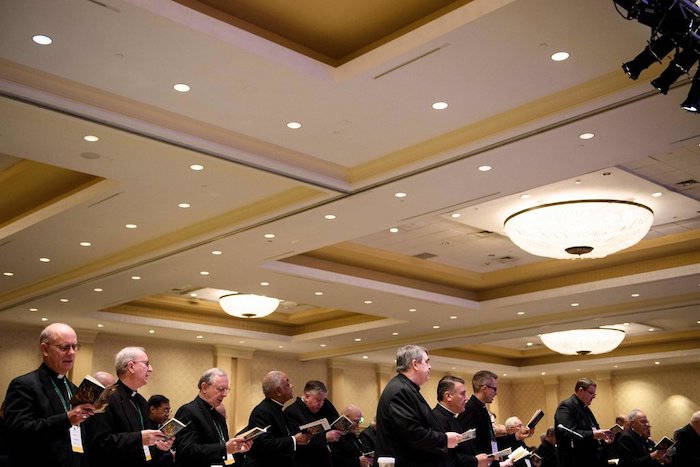
By John Gehring
Several hundred Catholic bishops from around the country have gathered in Baltimore for a national meeting at a time when many of us faithful are grieving, angry and running out of patience. The horrifying scale of the clergy sexual abuse crisis, as chronicled by a Pennsylvania grand jury report in August that revealed widespread abuse and cover-up over several decades, underscores an obvious but essential point: Bishops can’t be trusted to police themselves.
Moreover, a recent investigation by The Boston Globe and The Philadelphia Inquirer found that more than 130 bishops — nearly one-third of those still living — have been accused of failing to adequately respond to sexual abuse in their dioceses. New explosions are still coming. Last month, a former assistant to Bishop Richard Malone of Buffalo released hundreds of secret documents that showed how the bishop continued to send predator priests back into parishes. Bishop Michael Bransfield of West Virginia resigned in September after claims that he had sexually harassed younger priests.
It’s not the first meeting of its kind: 16 years ago, after The Globe’s groundbreaking “Spotlight” investigation, bishops met in Dallas to adopt zero-tolerance policies. Any priest who had abused a minor would be removed. Civilian review boards would investigate claims of clergy misconduct. Those policies led to the removal of hundreds of priests, but the bishops didn’t implement procedures that held themselves to the same standard of accountability.
The Vatican, including Pope Francis, has also not done enough. A proposal to create a Vatican tribunal to evaluate accusations against bishops — an idea floated by the pope’s own Pontifical Commission for the Protection of Minors — has gone nowhere.
Marie Collins, an abuse survivor who resigned in frustration from the commission, rightly observed that “history will judge Pope Francis on his actions, not his intentions.”
The failure to hold bishops accountable perpetuates a privileged culture of clericalism that lets the hierarchy operate under different rules.
Bishops were scheduled to vote on policies to address the abuse crisis in Baltimore. But in a surprise move, Cardinal Daniel DiNardo, president of the United States Conference of Catholic Bishops, stunned his fellow bishops and media by announcing that the Vatican wanted those plans put on hold until after a February meeting in Rome called by Pope Francis that will bring together bishops from around the world. That could prove to be prudent for the final outcome, but it’s hard to overstate how tone deaf the timing is given the growing Catholic anger in the pews.
Whatever credibility the Catholic Church has left as a voice for justice in public life, the clock is ticking down fast.
Standards and systems that prioritize transparency and accountability are essential. But church leaders should also recognize that technical or bureaucratic responses are insufficient to address the urgency of this moment. The Catholic Church faces a profound crisis of legitimacy. This crisis is not only the product of sexual predation. Moving forward, Catholic leaders should be more open to at least discussing a host of thorny issues. The church’s patriarchal culture — most exemplified in excluding women from the priesthood — and its teachings about human sexuality and gender are rejected by not only many Americans but also a sizable share of faithful Catholics in the pews.
How does the church hope to influence the wider culture when pastors are ignored by many of its own flock?
At this dark crossroads for the Catholic Church, there is an opportunity for Pope Francis and the bishops to take a fresh look at the church and begin a prayerful discernment about the limits of patriarchy, human rights for L.G.B.T. people and the exclusion of women from the clergy. These will be uncomfortable but necessary topics to explore if the Catholic Church wants an era of renewal and its leaders hope to reclaim the ability to speak more persuasively to a diverse public square.
The final report from a recently concluded monthlong meeting at the Vatican that brought together young Catholics and hundreds of bishops from around the world acknowledged the need for a broader conversation about the church’s teachings on sexuality. There are questions, the report noted, “related to the body, to affectivity and to sexuality that require a deeper anthropological, theological, and pastoral exploration.” While conservative bishops such as Archbishop Charles Chaput of Philadelphia led the charge to make sure the descriptor “L.G.B.T.” was not included in a final report — a pre-synod working document used the term for the first time in Vatican history — that subtle but significant opening is an invitation for a long-overdue conversation.
Church teaching isn’t set by a poll or the shifting winds of popular opinion. At the same time, the church is not a static institution. Doctrine does change and develop. The Second Vatican Council met from 1962 until 1965, a time when bishops opened the windows of the church to the modern world. The council brought historic changes in the way Catholicism understood democracy, the Jewish faith, the role of lay Catholics, interfaith dialogue and liturgy.
The question isn’t whether the church should stay the same or change. Paradoxically, the church has always done both. The more essential question is whether a 2,000-year-old institution that thinks in centuries can once again stand with a foot firmly planted in the best of its tradition while stepping into the future renewed and relevant to a new generation.
Complete Article ↪HERE↩!